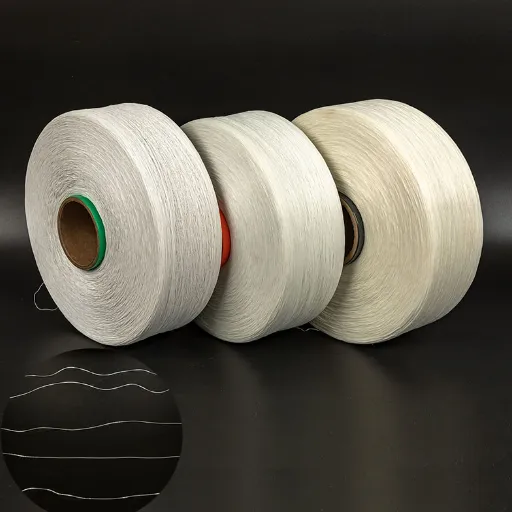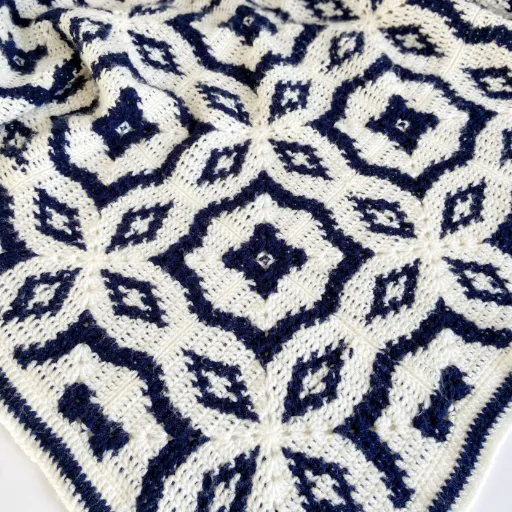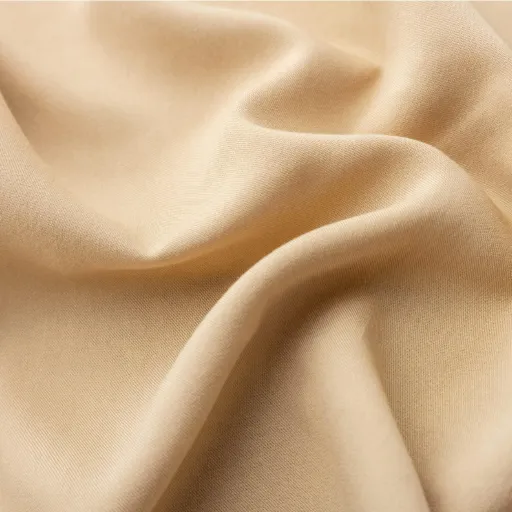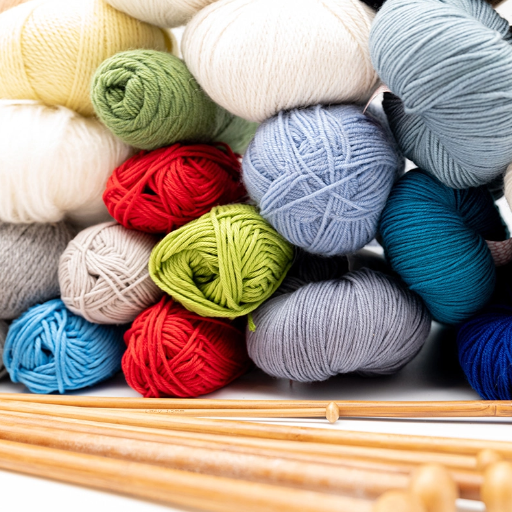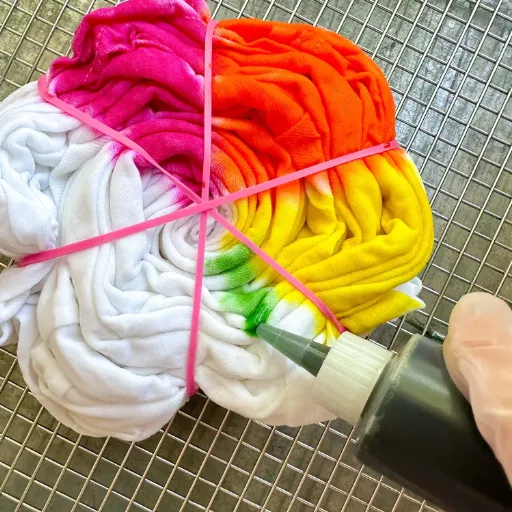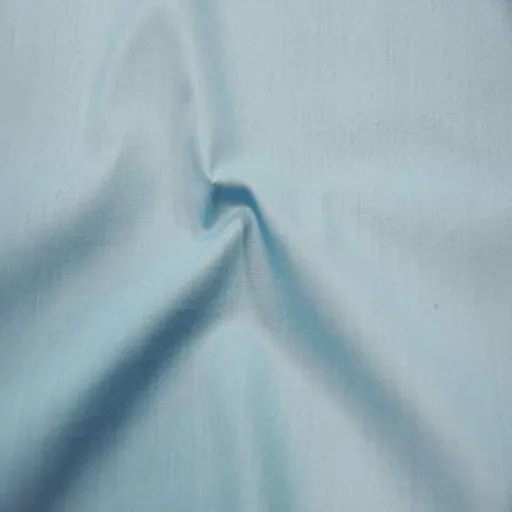Crocheting and knitting enthusiasts know that choosing the right yarn can significantly impact the outcome of your projects. Elastic yarn, just like any other form of yarn for your needs, is an essential yarn for creating everyday items. This comprehensive guide will explore what elastic and stretch yarn actually are, provide numerous benefits, and discuss how they integrate into your creations. As elastic yarns hold the leading position in the field for making fitting pieces, durable materials, and intricate patterns, they offer numerous options for things you can do when crocheting or knitting.
Understanding Stretch Yarn
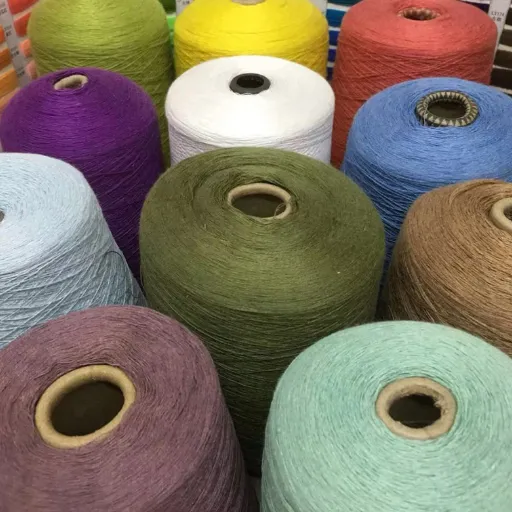
Definition and Characteristics of Stretch Yarn
Stretch yarn is a type of yarn made to provide fabrics with elasticity and flexibility. To make the fibers stretch to considerable lengths without losing the original shape, the yarn is manufactured with enormous strength in its ability to stretch. Such yarns are ideal for forming garments that demand a snug fit or a close-fitting, tailored look. Stretch yarn is distinguished by enabling increased freedom of movement and comfort in the process of wearing clothes.
🔑 Key Characteristics
- Elastic Recovery: Can rewind itself back to the original un-stretchable length through its elastic properties
- Elastane/Lycra Integration: Elasticity is obtained by a blend of elastane or Lycra fibers
- Deformation Resistance: Withstands frequent stretching and wear without giving in
- Enhanced Shearing Strength: Maintains integrity through repeated use
These properties give stretch yarn amazing versatility and allow its extension in activewear, sportswear, and garments that need to accommodate movement and fit. This allows very fluid creative endeavors in knitting or crocheting, such as work with intricate designs and motifs inspired by artistry to suit the changing shapes of bodies. Stretch yarn plays an important role in the innovation of modern textiles, bringing together styling and functionality.
Benefits of Elastic Yarn in Crochet and Knitting
✨ Shape Retention
Elastic yarn helps maintain the shape and integrity of handmade items. While normal yarns make products wear out over repeated use or cleaning, elastic yarn provides lasting fit as knitwear holds its form perfectly—even stretch items maintain their structure better. This is ideal for items requiring constant stretching or that need to accommodate growing figures or movements.
💫 Enhanced Comfort
Elastic yarn has an extraordinary capacity to confer comfort to wearable items. As the yarn stretches and moves along with the body, discomfort or restriction doesn’t arise. Crocheting or knitting with elastic yarn produces more forgiving and flexible pieces. This is particularly helpful for creating well-fitting yet cozy wearables such as gloves, hairbands, and activewear.
🎨 Creative Versatility
Elastic yarn expands creative opportunities for crafters. Its unique properties enable artisans to perform complex designs and patterns that require elasticity like ribbing, lacework, or form-fitting details. Pieces can stretch or return to their original shapes without getting disorganized, providing better possibilities for producing attractive and functional items.
Comparing Stretchy Yarn with Traditional Yarn
| Aspect | Stretchy Yarn | Traditional Yarn |
|---|---|---|
| Flexibility | High flexibility; stretches and returns to original shape with ease | Limited flexibility; prone to permanent shape changes when stretched |
| Best Applications | Socks, swimwear, sportswear, fitting accessories, high-impact projects | Blankets, sweaters, decorations, fabric-structured objects |
| Beginner Friendliness | More challenging; requires skill in managing tension and stitch consistency | Easier to work with; predictable behavior makes it ideal for beginners |
| Durability & Maintenance | Durable with synthetic ingredients; less prone to wear and tear but may lose elasticity over time with washing | Natural fibers offer classic appeal but may shrink or lose shape when washed |
💡 Pro Tip: With time and experience, crafters will get accustomed to stretchy yarn and unveil its versatility for specialized projects that require snug or adaptive fits. Choose between the two based on whether the project is meant for lasting purposes and your skill level.
Applications of Stretch Yarn

Fashion and Apparel Design
Stretch yarn has become a highly crucial material in the field of fashion and garment design because of its outstanding properties combined with the flexibility to cater to each requirement. It bridges the space between different body shapes, providing comfort and performance in attire like yoga clothes, swimwear, and daily wear. The elasticity of stretch yarn guarantees a snug fit while keeping enough ease to accommodate the many shapes and actions of the body.
Applications in Fashion Design:
- Form-Fitting Garments: Creates structured fittings that collaborate with the wearer’s body
- Pattern Innovation: Allows for skin-tight patterns that flow across body contours without encumbering movement
- Longevity Enhancement: Helps fabrics regain shape after stretching, minimizing wear and tear
- Daily Wear Integration: Maintains aesthetics and functionality through regular washing and daily use
Sportswear and Activewear Innovations
Activewear and sportswear have been elevated to new standards with stretch yarn innovations. The introduction of nylon-spandex fabric blends started a new era in sportswear and fashion. Modern activewear, from athletic leggings to compression gear, relies heavily on the unique properties of stretch yarn.
Today’s athleisure fashion has evolved dramatically—bright joggers now appear in casual meetings inside city buildings, and traditional suits are being replaced by comfortable, stretchy alternatives. This transformation occurred primarily through the 1990s to present day, with activewear and sportswear continuously evolving.
Modern Performance Features:
- ✅ Durability: Spandex withstands frequent washing without losing elasticity or comfort
- ✅ Anti-Odor Properties: Modern fabrics include antimicrobial coatings
- ✅ Enhanced Longevity: Maintains performance through repeated use
- ✅ High Performance Standards: Meets consumer expectations for professional-grade sportswear
Medical Textiles Utilizing Stretch Yarn
Stretch yarn is a significant ingredient in developing medical textiles with flexibility, comfort, and adaptability for various healthcare applications. These yarns are designed to provide elasticity, making them fit human bodies while maintaining shape even after repeated stretching. They are ideal for compression garments, bandages, and support braces where secure yet comfortable fits are essential.
Medical Applications Benefits:
- Compression Therapy: Enhances blood circulation and reduces swelling in patients with lymphedema or varicose veins
- Pressure Sore Prevention: Reduces pressure absorption resistance, preventing skin abrasion in immobile patients
- Bioactive Properties: Combined with high-performance fibers for hygiene in bandages and wound dressings
- Moisture Management: Breathable textiles lower infection risk while providing comfort
Manufacturing Process of Stretch Yarn
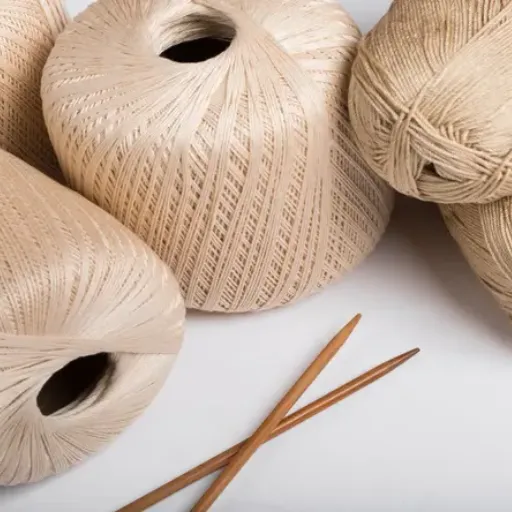
Materials Used in Elastic Thread Production
Elastic thread is made by mixing elastic and non-elastic materials that give it its characteristic properties. Key materials include spandex, polyurethane, and elastane, all known for high elastic properties. These are usually blended with non-elastic fibers like polyester, nylon, or cotton to produce yarn that possesses a balance of extension, strength, durability, and comfort.
| Material Type | Function | Key Properties |
|---|---|---|
| Core Materials (Spandex/Polyurethane) | Provide extension and recovery | Deforms under tension and recovers to original form |
| Non-Elastic Fibers (Polyester/Nylon/Cotton) | Enhance structural integrity | Add softness, moisture absorbance, abrasion resistance |
| Specialized Blends | Application-specific performance | Medical: breathable, hypoallergenic; Sportswear: lightweight, quick-drying |
Techniques for Creating Durable Stretchy Yarn
The synthesis of durable, elastic yarn requires a careful mixture of materials, processing, and quality checking to ensure the finalized product meets usage guidelines.
Manufacturing Techniques:
1. Fiber Blending
Combining synthetic fibers (spandex/elastane) with natural or synthetic fibers enhances elasticity, durability, and comfort. Appropriate blending ratios create yarns suitable for various applications like compression wear or sportswear.
2. Mechanical Modification
Specialized spinning processes like air-jet or core spinning place protective outer layers on elastic core yarn. This retains stretch while preventing wear and tear. Heat setting stabilizes elastic properties after spinning.
3. Protective Coatings
Specialized coatings enhance yarn durability against abrasion and environmental effects (moisture, UV light). Essential for extreme-use applications like sportswear and medical textiles.
Technological Advances in Yarn Production
Technological developments in modern yarn production bring greater efficiency, quality, and eco-friendliness. Key outcomes include computerized spinning systems that guarantee yarn quality and time efficiency through software-linked sophisticated sensors regulating delicacy, spindle tension, and speed.
🌱 Eco-Friendly Processes
- Recycled fibers
- Water-saving dyeing technologies
- Bio-based coatings
- Circular economy support
🔬 Smart Textiles
- Temperature regulation
- Moisture absorption
- Sensory functions
- Nanotechnology integration
⚙️ Production Innovation
- Computerized spinning
- Quality assurance sensors
- Reduced defect rates
- Enhanced efficiency
Innovative Trends in the Stretch Yarn Industry

New Blends for Enhanced Comfort and Functionality
New blends are emerging in the stretch yarn industry that exhibit equal measures of comfort and utility. Manufacturers combine synthetic fibers like spandex or elastane with natural fibers like cotton and bamboo, creating blends favored by activewear and leisure clothing industries.
Performance-Enhanced Properties:
- Moisture-Wicking: Helps garments draw sweat away from skin during activity
- Odor Prevention: Natural yarn treatments prevent odor buildup for hygiene and long-term freshness
- Eco-Friendly Materials: Organic cotton and recycled polyester blends for environmentally-conscious products
- Maintained Quality: Environmental consciousness without compromising functionality
Advancements in Fabric Technology
Fabric technologies today are highly innovative, with enhancements in antibacterial applications, strength, abrasion resistance, liquid repellency, and temperature control. These advancements provide consumers with comfort and energy efficiency, particularly in activewear and outdoor gear.
🔬 Smart Textiles Revolution
Intelligent fabrics endowed with sensors or conductive yarns respond to environmental stimuli including temperature or movement. These textiles:
- Gather biometric data for health and wellness monitoring
- Enable wearable technology integration
- Provide compression therapy in healthcare settings
- Monitor patient conditions continuously
🌍 Environmental Impact Improvements
- Waterless Dyeing: Conserves resources and reduces harmful emissions
- Closed-Loop Production: Saves resources throughout manufacturing
- Advanced Recycling: Converts unwanted textiles into high-end materials
- Circular Economy Solutions: Addresses fast fashion and excessive waste problems
Emerging Brands in the Stretch Yarn Market
The stretch yarn market has experienced significant growth in recent years due to high demand for comfortable, long-lasting, and versatile fabrics. Emerging brands are committed to innovation and sustainability, serving consumer preferences alongside environmental concerns.
Brand Innovation Focus Areas:
♻️ Sustainable Production Methods
Using recycled materials, reducing carbon footprint, and implementing lean production processes
⚡ Advanced Fabric Technology
Weaving yarns with elasticity, breathability, durability, and lightweight design for sportswear and performance fabrics
🔍 Supply Chain Transparency
Providing complete visibility from production outline to implementation, allowing consumers to understand manufacturing processes
♻️ End-of-Life Campaigning
Designing products for recycling or reuse without material depreciation, embracing no-waste philosophy
Sustainability in Stretch Yarn Production

Eco-Friendly Practices in Yarn Manufacturing
Eco-friendly yarn manufacturing minimizes environmental impact by adopting beneficial practices without compromising production standards. Key practices include introducing renewable and biodegradable materials like organic cotton, wool, and bamboo instead of synthetic fibers derived from crude oil. Natural fibers decompose faster, reducing accumulated waste in landfills.
🌿 Renewable Materials
Organic cotton, wool, and bamboo replace petroleum-based synthetic fibers. These natural materials decompose faster and reduce long-term environmental impact.
⚡ Energy Efficiency
Plants increasingly use renewable energy sources like solar or wind to minimize greenhouse gases. Modern machines conserve electricity and water in spinning and dyeing operations.
♻️ Recycling & Waste Management
Utilizing recycled materials from post-consumer fabrics encourages circular economy where old resources are used efficiently and recover quickly from raw material supply loads.
Utilizing Recycled Materials in Stretch Yarn
Recycled materials are fundamental for producing eco-friendly stretch yarns, providing an alternative to processing fiber from raw materials without negative environmental impact. Fabric and recyclable waste materials are processed to extract fibers useful in stretch yarn production. This reduces virgin resource depletion, minimizes waste, and lessens the environmental impact of conventional yarn production.
Dual Benefits of Recycled Materials
| Benefit Type | Impact |
|---|---|
| Environmental | Decreases landfill waste; reduces greenhouse gas emissions from raw material collection and processing |
| Economic | Saves manufacturing costs long-term; promotes resource efficiency and supports circular economy |
Modern advancements in recycling stretch yarn focus on maintaining elastane properties while integrating eco-fibers. Recycling and blending technologies effectively preserve vital properties like stretchability and durability, allowing manufacturers to meet demanding quality expectations while addressing environmental concerns sustainably.
Industry Efforts to Reduce Environmental Impact
The stretch yarn industry is actively working to minimize its environmental footprint through comprehensive sustainability initiatives. These efforts span from material sourcing to production processes and waste management.
🎯 Key Industry Initiatives
- Recycled Component Integration: Sourcing materials from post-consumer fabrics and waste items, processing them to extract usable fibers while reducing virgin resource dependence
- Emission Reduction: Decreasing greenhouse gas emissions throughout the supply chain from extraction through production
- Resource Efficiency: Implementing cost-effective recycling processes that contribute to long-term sustainable operations
- Quality Maintenance: Developing techniques to preserve elastane properties while incorporating sustainable fibers
- Performance Standards: Meeting customer expectations for high-quality products while maintaining environmental responsibility
Frequently Asked Questions (FAQ)
❓ What is stretch yarn, and what is the difference between it and regular yarn?
Stretch yarn is a highly elastic yarn made to stretch and recover when tension is no longer applied, often achieved by blending elastane, spandex, or Lycra in the yarn construction. Unlike regular yarns made with cotton, wool, or polyester, stretch yarns allow fabric to stretch but retain its fit and form. These stretch yarns improve fit and comfort in activewear, hosiery, fitted knitwear, and other garments.
❓ What fibers are frequently used in making stretch yarns?
The most commonly used fibers for stretch yarns are spandex (also known as Lycra or elastane), rubber, and core-spun yarns where elastic filaments are wrapped in cotton, polyester, or nylon fibers. This combination balances elasticity, breathability, durability, and hand feel for various applications.
❓ What is the manufacturing method of stretch yarn?
Stretch yarn is created using methods that incorporate an elastic core or surround an elastic filament. Core-spun yarns feature a central elastic filament wrapped in staple fibers (like cotton) to improve comfort and appearance. Covered yarn involves continuous envelopment with a non-fibrous outer layer. These constructions influence stretch, recovery, and fabric appearance when knitted or woven.
❓ What are the main performance characteristics to look for in stretch yarn?
Key performance characteristics include:
- Stretch: How far the yarn can elongate
- Recovery: Ability to return to original length
- Durability: Resistance to fatigue and abrasion
- Hand/Softness: Tactile feel
- Dimensional Stability: Shape retention
- Additional Features: Moisture management, breathability, UV resistance (for swimwear and performance textiles)
❓ What are the most beneficial applications for stretch yarn?
Stretch yarn is ideal for applications requiring fitness, freedom of movement, and comfort including: activewear, athleisure, underwear, swimwear, compression garments, seamless knitwear, socks, and performance hosiery. It’s particularly useful for body-enhancing outfits requiring both elasticity and rapid recovery.
❓ Can stretch yarn be used in woven fabrics?
Yes! While stretch yarns provide natural stretch in knit structures, they’re also used to enhance woven fabrics. They can be inserted along specific directions (frequently in the weft) or woven into fabric through specialized constructions. This produces woven fabrics with controlled stretch suitable for stretch denim, casual wear, and activewear.
❓ What are common problems with stretch yarn and how can we prevent them?
The main problems are loss of elasticity (or stretch recovery), pilling, filament breakage, and color fading. Ways to prevent the problems include climate-appropriate elastane blends, the correct twist, and yarn count for the intended fabric bias, appropriate fabric finishes, following care instructions, and avoiding excessive exposure to chlorine, oils, or high heat to destroy the elastic fibers.
❓ How do you choose stretch yarn for a specific project?
Picking up a stretch yarn becomes a game depending on the end-user needs: deciding how much stretch and recovery are needed, defining the desired hand and drape of the fabric, determining if moisture-wicking or thermal effects are desirable, and finally, figuring out the blend type. Hence, for example, high-elastane-core yarns work best for swimwear and compression; cotton-covered elastane would be great for making comfortable everyday garments; and polyester/elastane would work great for activewear with durable quick-dry attributes.
References
-
Britannica: Stretch Yarn – Explains the characteristics and production process of stretch yarn, including its spiral crimp and elasticity.
-
Textile Yarn: Crochet and Knit with Stretchy Elastic Yarn – A guide on using elastic yarn, detailing its composition and applications.
-
Made in America Yarns: Viscose Stretch Yarn – Describes viscose stretch yarn, its uses in knitting and weaving, and its popularity in the fashion industry.
-
Cascade Fixation Cotton Elastic Yarn – Highlights a specific type of cotton-spandex yarn, known for its softness and elasticity.
-
Amazon: Stretchy Yarn for Crocheting – Offers a variety of stretchy yarns suitable for crocheting and other crafts.









